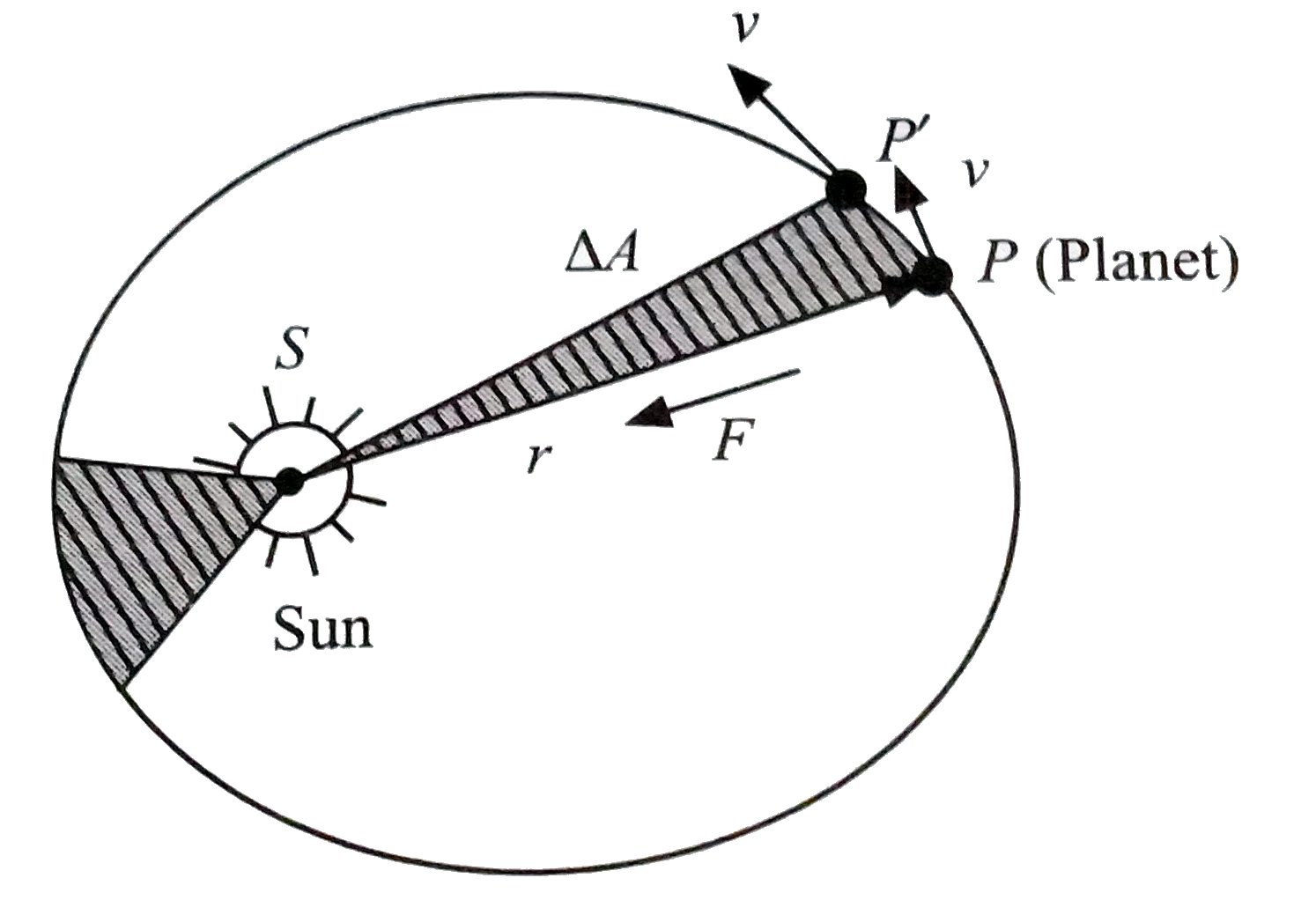Assertion: The planet move slower when they are farther from the Sun than when they are nearer.
Reason : Angular velocity of a planet is a constant quantity.
If both assertion and reason are true and reason is the correct explanation of assertion
If both assertion and reason are truebut reason is not the correct explanation of assertion
If assertion is true but reason is false
If both assertion and reason are false.
The correct Answer is:C
( c) Kepler's law of areas, the line that join any planet to the Sun sweeps equal areas is equal intervals of time as shown in figure.

The areal velocity of the planet around the sun is constant. To keep the areal velocity constant, the linear speed of the planet goes on changing. The linear speed is more, when the planet is close to the Sun and less, when it is away from the sun.
Topper's Solved these Questions
Similar Questions
Knowledge Check
Assertion : A planet moves faster, when it is closer to the sun in its orbit and vice versa.
Reason : Orbital velocity in orbital of planet is constant.AIf both assertion and reason are true and the reason is the correct explanation of the assertion.BIf both assertion and reason are true but reason is not the correct explanation of the assertion.CIf assertion is true but reason is false.DIf the assertion and reason both are false.This section contains Assertion and Reason type questions. Each question has 4 choices (1), (2), (3) and (4), out of which only one is correct.
Assertion (A) A planet moves faster, when it is closer to the sun in its orbit and vice versa.
Reason (R) Orbital velocity in the orbit of planet is constant.AIf both Assertion and Reason are true and the Reason Is the correct explanation of the Assertion,BIf both Assertion and Reason are true but Reason Is not the correct explanation of the Assertion.CIf Assertion Is correct but Reason Is Incorrect.Dlf Assertion Is Incorrect but Reason Is correct.A satellite can be in a geostationary orbit around earth at a distance r from the centrer. If the angular velocity of earth about its axis doubles, a satellite can now be in a geostationary orbit around if its distance from the centre is
Ar2Br2√2Cr(4)1/3Dr(2)1/3
A planet is revolving around the Sun in an elliptical orbit. Its closest distance from the sun is rmin. The farthest distance from the sun is rmax if the orbital angular velocity of the planet when it is nearest to the Sun ω then the orbital angular velocity at the point when it i at the farthest distanec from the sun is
View SolutionAssertion : A central force is such that the force on the planet is along the vector joining the sun and the planet.
Reason : Conservation of angular momentum is valid for any central force.
View SolutionFor a planet revolving round the sun, when it is nearest to the sun
View SolutionAssertion (A): To orbit around Sun, the planet Mars takes lesser time than time taken by the Earth.
Reason (R): The diameter of the planet Mars is less than that of the Earth
View SolutionAssertion : When a particle moves in a circle with a uniform speed its acceleration is constant but the velocity changes.
Reason : Angular displacement is not a axial vector.
View Solution
